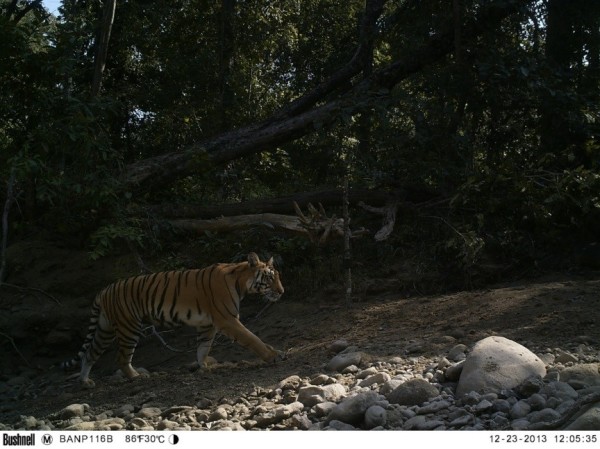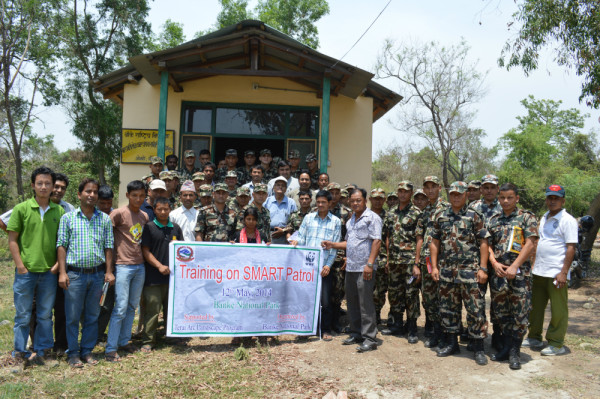Unprecedented wild tiger growth brings new challenges you can help solve. Here’s how
When I visited Nepal’s Banke National Park (BaNP) in 2009 to conduct a tiger habitat survey, I did not come across a single sign of a wild tiger in the area. No footprints and no prey sightings.
I returned to the park in 2013 and was ecstatic to see firsthand that newly implemented conservation initiatives were succeeding. This time, I saw several signs of wild tigers. Not only tiger footprints, but lots and lots of deer – the tiger’s main prey.
New tiger data released today by WWF and the Global Tiger Forum confirms what I saw on the ground. In 2010, there were only 121 tigers in Nepal, where WWF-Canada has concentrated our tiger conservation work. Now there are at least 198, a 60 per cent increase according to the latest national tiger survey.
And globally, the wild tiger population has increased for the first time since conservation efforts began in the 1960s. There are now about 3,890 wild tigers on the planet, up from 3,200 in 2010.
How we got here
This success is a result of several factors, including increased tiger populations in Nepal, India, Russia and Bhutan, improved surveys and enhanced protection of tigers and their habitats.
WWF-Canada’s wild tiger conservation efforts in Nepal include population monitoring, anti-poaching operations, tiger-habitat improvement projects, awareness-raising campaigns and training local communities as citizen scientists to undertake tiger population and habitat surveys.
How you can help
As tiger population numbers grow, so too must our conservation efforts. And you can help by donating now to support WWF-Canada’s tiger conservation efforts.
With help from you, we can do even more to help tigers thrive. Here’s how:
- We need to scale up anti-poaching efforts. More wild tigers mean more opportunities for poachers, the most immediate threat.
- With more tigers, we must also add new protected areas. As a wide-ranging species, tigers require large spaces to roam. We must ensure that protected areas are large enough and interconnected to nurture their population for many more years to come.
What your donation can buy
- $40 buys a first-aid kit for an anti-poaching patrol.
- $60 provides safety measures for tiger rangers.
- $100 equips an anti-poaching patrol squad with jackets and communication devices.
A long way still to go
The roots of the promising numbers released today go back to 2010. At the time, there were only about 3,200 wild tigers left on the planet after more than 100 years of steady decline. Alarmed, the 13 tiger-range countries committed to the goal – known as Tx2 – to double wild tiger numbers by 2022, the next Chinese year of the tiger.
Although we are seeing some important tiger conservation progress made, we still have a long way to go to meet the Tx2 goal.
Some countries are seeing unprecedented growth in tiger numbers, however, others are still faced with declining populations, and in some cases, extinction. Cambodia recently declared tigers extinct in that country and have planned to reintroduce two males and five or six females from elsewhere.
I believe that with prevailing strong political will among the tiger-range governments, concrete, on-the-ground actions and your help, we can double wild tiger numbers by 2022.
Dr. Rinjan Shrestha is WWF-Canada’s lead specialist in Asian big cats. He has a PhD in wildlife ecology.



